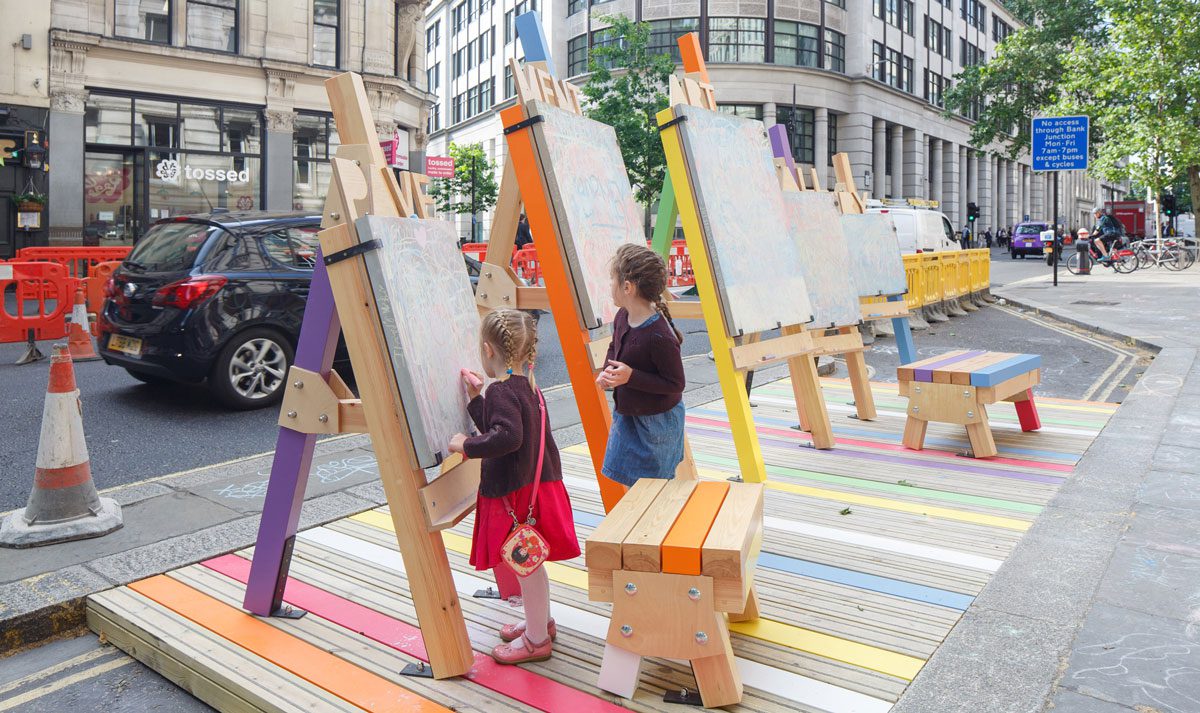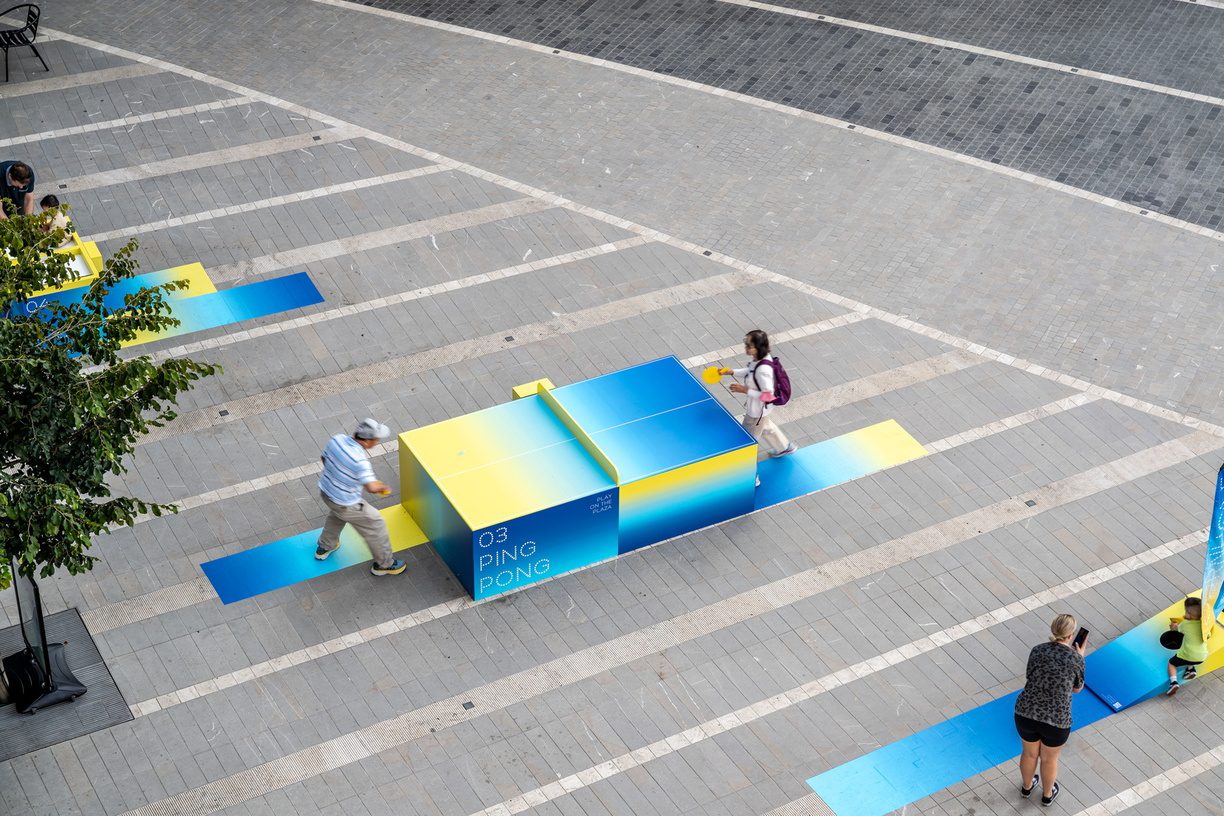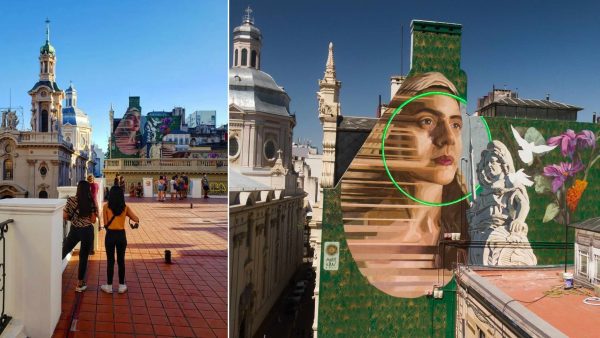The day is a global celebration of the social, economic, cultural, and political achievements of women. It’s also a day to raise awareness about the challenges women face and consider how we can create a world that is more inclusive and safe for everyone.
Public spaces – such as parks, streets, and squares – serve as the backdrop for communal life, yet the experiences of individuals, particularly women, in these areas can vary drastically. Reflecting on how placemaking, a community-led approach to the planning, design, and management of public spaces, can be reimagined to enhance the safety and sense of belonging for all.
It’s time we take stock of the roles our cities and neighbourhoods play in the empowerment and experiences of women and make a concerted effort to ensure that our public spaces reflect our values of equality and inclusivity.

No exploration of placemaking is complete without acknowledging Jane Jacobs’ enduring legacy and recognizing the impactful contributions of leaders like Jay Pitter.
Jane Jacobs, an urban visionary and activist, challenged conventional ideas of city development. Her groundbreaking book, “The Death and Life of Great American Cities,” remains a cornerstone in urban planning literature. Jacobs advocated for community-driven urban planning, emphasizing the importance of cities fostering the organic growth of neighbourhoods and communities.
Her legacy is a testament to the transformative influence of women in shaping urban environments, advocating for diversity, density, and dynamic urban spaces that cater to the diverse needs and experiences of all individuals, irrespective of gender.
In the contemporary landscape of placemaking, voices like Jay Pitter are pushing boundaries at the intersection of urban design and social justice. With a portfolio spanning over 25 cities across North America, Jay Pitter is reshaping how we perceive and create public spaces.
Blending urban design expertise with a commitment to social justice, Pitter represents a new wave of thought leadership in placemaking. Her work actively contributes to the evolution of public spaces that prioritize inclusivity and safety for all.
In exploring the dynamics of urban transformation, it is crucial to acknowledge that the pursuit of change goes far beyond the iconic figures of Jay Pitter and Jane Jacobs. We celebrate the multitude of individuals and initiatives whose contributions, though often unrecognized, are equally vital in shaping our cities for the better.

Placemaking plays a crucial role in shaping the comfort and image of public spaces, greatly impacting how individuals perceive and interact with these environments. By intentionally designing and creating spaces that are inviting, inclusive, and aesthetically pleasing, placemaking initiatives aim to foster a sense of belonging among the people who use them.
However, it is important to recognize that the experience of belonging in public spaces can vary significantly among individuals, especially for women. Factors such as safety concerns, social norms, and gendered expectations can influence how women perceive and navigate these spaces. By addressing these challenges and actively involving diverse voices in the placemaking process, we can create public spaces that truly foster a sense of belonging for everyone, ensuring that they are safe, welcoming, and reflective of the diverse needs and experiences of all individuals.
The incorporation of vibrant colours and striking visuals in public spaces has a profound impact on the way individuals experience and interact with their environment. Research has shown that aesthetically pleasing spaces attract people, encouraging them to spend more time and engage in activities. Creating an inviting space to be a respite from the sometimes challenging urban environment can provide opportunities for relaxation and community-building.
A sense of security is a critical consideration in discussions around women’s experiences in public spaces. Placemaking provides an avenue to address these concerns by intentionally designing well-lit spaces with clear sightlines and ample seating. Inclusive public spaces should also consider the needs of diverse users, including women with disabilities, the elderly, and those from different cultural backgrounds. By creating spaces that are accessible and responsive to the needs of all, we foster a sense of inclusivity and community stewardship.
The community’s involvement in the design and activation of public spaces is essential for creating environments that resonate with local values and the population’s lived experiences. Women can often provide insights that differ from those of their male counterparts, leading to spaces that universally appeal to the community’s diverse needs. There is also a positive snowball effect that takes place since when the community is engaged in creating a place, it attracts more diverse members, creating an even greater sense of community.

Understanding inclusive spaces involves weaving specific characteristics that prioritize inclusivity and amenities necessary for women to feel a sense of belonging in public spaces. Security measures, like well-lit paths and reduced hidden spots, ensure women feel secure while navigating these spaces. Accessibility features, such as easy access ramps, enable women with mobility challenges to move freely. Inclusivity embraces diverse backgrounds, cultures, ethnicities, abilities, and ages, fostering a sense of belonging. Providing amenities like clean restrooms and breastfeeding areas demonstrates a commitment to women’s well-being. Community events create opportunities for women to connect and contribute.
By incorporating these elements, creative placemaking transforms public spaces into vibrant, inclusive, and inspiring environments that foster belonging.
Intersectional placemaking is about sparking cultural shifts in urban design and recognizing the importance of public spaces in social equity and community well-being. By championing the role of women in the design of public spaces, we can build cities that reflect the values of inclusion for all.

Mexico City’s Plaza in la Roma is a beautiful example of a space transformed by and for the community, where a weekly art market led the way to a deeper revitalization, creating a vibrant and safe destination for locals and tourists alike. The plaza, also known as ‘Plaza Río de Janeiro,’ illustrates the power of local women in defining and creating spaces that resonate with their needs.
Some cities, mindful of the fear women often experience in urban spaces, are turning to art to empower and transform. In Spain, there have been efforts to name streets after women or female-associated professions and encourage the creation of murals or public art that celebrate the contributions of women. These murals serve as reminders of women’s achievements and help combat the hostile environment that can be created by sexist advertisements or gender violence.
Another impactful instance is in Rosario, Argentina, where women and girls designed and painted a mural in a neighbourhood square that they identified as unsafe. The mural aimed to re-appropriate public space and conveyed the message of “More women in the street. Cities safe for everyone without fear and without violence.”

Creating women-friendly spaces is an iterative process that requires continuous evaluation. Utilizing tools such as women’s safety audits, pedestrian counts that break down by gender, and community surveys can provide the data necessary to inform future decisions.
International Women’s Day serves as a powerful reminder of the work that still needs to be done to create a world that is equitable and safe for all. It provides an opportunity for us to reimagine our public spaces and consider how they can be transformed to serve women’s needs better. The work of creative placemaking is an ongoing endeavour, and it requires the commitment and participation of all members of the community.
| Cookie | Duration | Description |
|---|---|---|
| cookielawinfo-checkbox-analytics | 11 months | This cookie is set by GDPR Cookie Consent plugin. The cookie is used to store the user consent for the cookies in the category "Analytics". |
| cookielawinfo-checkbox-functional | 11 months | The cookie is set by GDPR cookie consent to record the user consent for the cookies in the category "Functional". |
| cookielawinfo-checkbox-necessary | 11 months | This cookie is set by GDPR Cookie Consent plugin. The cookies is used to store the user consent for the cookies in the category "Necessary". |
| cookielawinfo-checkbox-others | 11 months | This cookie is set by GDPR Cookie Consent plugin. The cookie is used to store the user consent for the cookies in the category "Other. |
| cookielawinfo-checkbox-performance | 11 months | This cookie is set by GDPR Cookie Consent plugin. The cookie is used to store the user consent for the cookies in the category "Performance". |
| viewed_cookie_policy | 11 months | The cookie is set by the GDPR Cookie Consent plugin and is used to store whether or not user has consented to the use of cookies. It does not store any personal data. |